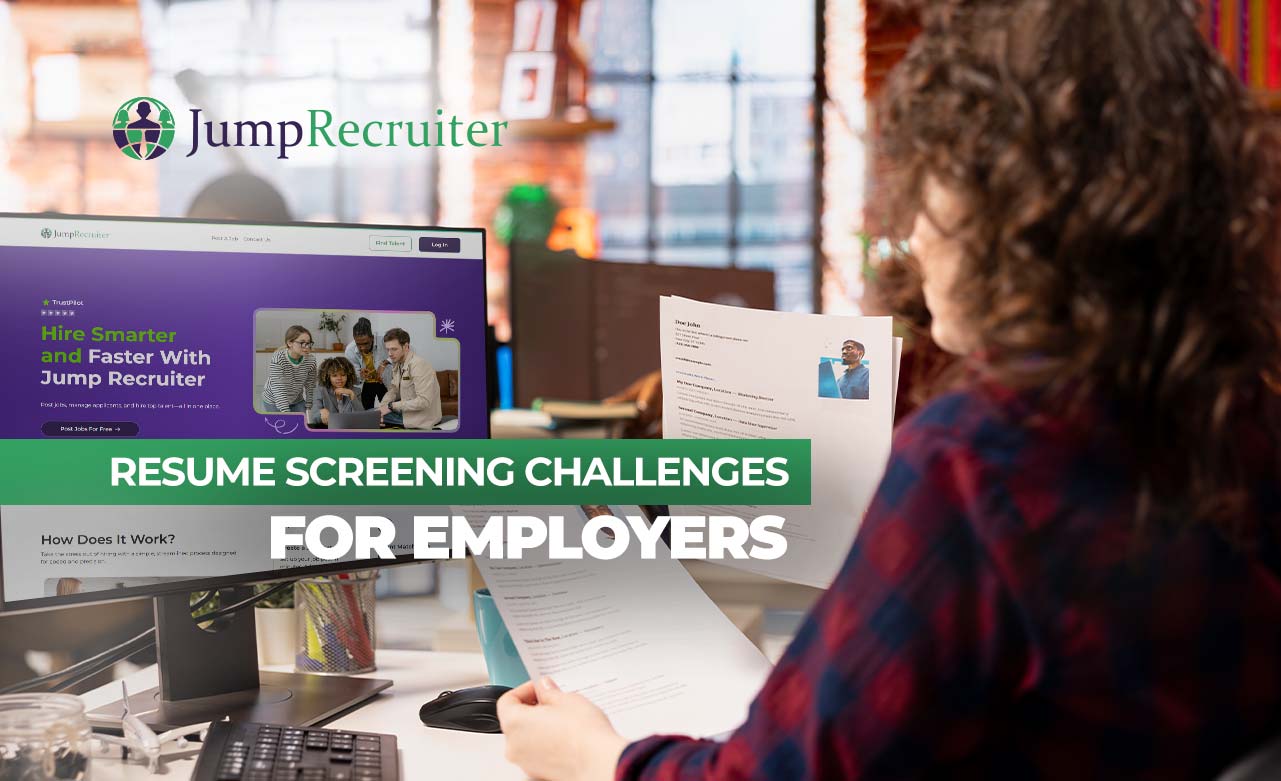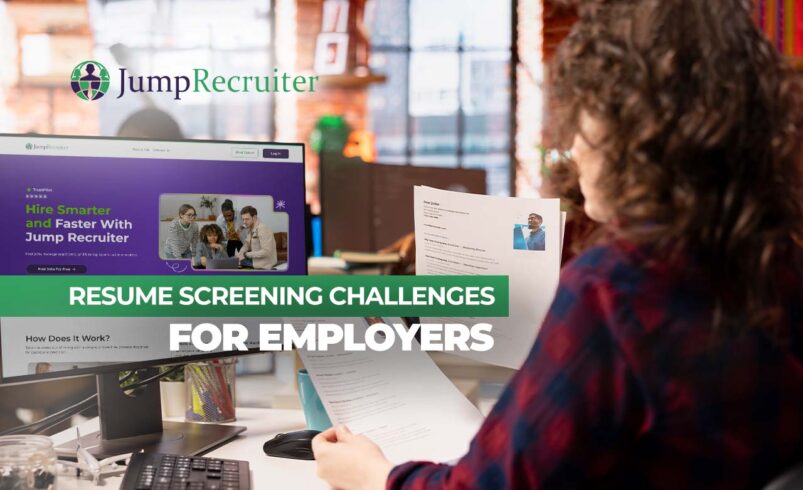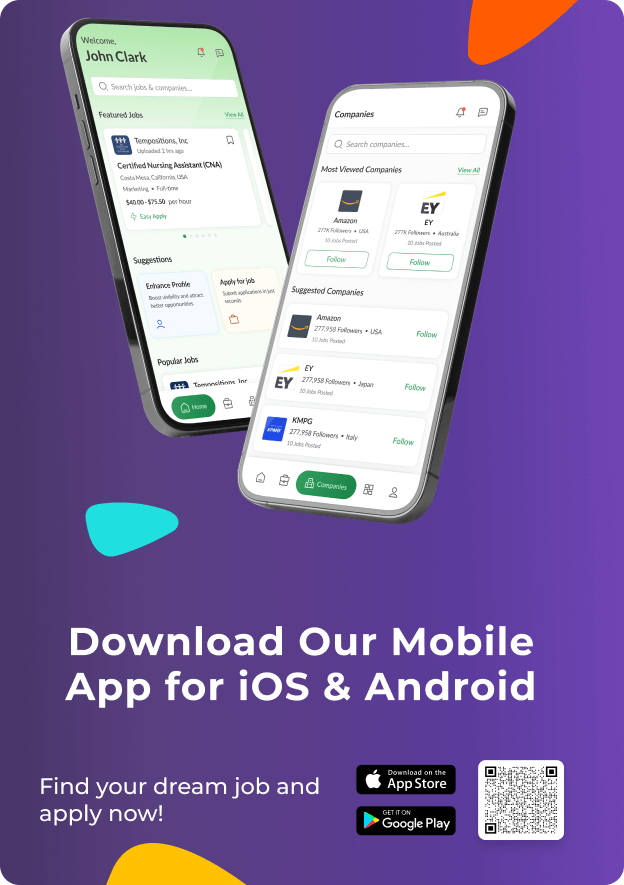Finding the right fit for any job is even more complex than it looks. Recruiters and hiring managers receive thousands of resumes against a job post, and it’s challenging for them to filter quality results over quantity. Many resumes do not reflect true skills, while others are designed to trick automated systems. Adding legal risks, compliance rules, and bias concerns, the screening stage becomes a significant hurdle for employers.
This blog explores the main challenges of resume screening in today’s hiring landscape. It looks at the limits of both traditional and modern resumes, the risks of depending too much on technology, and the future of screening methods. You will also see practical strategies and alternative ways to screen candidates more effectively.
Key takeaways from this blog
- Traditional resumes are weak predictors of job performance. They often hide skills, inflate facts, and lead to biased decisions.
- Modern resumes created with AI or heavy design often break applicant tracking systems (ATS) or mask a candidate’s true capabilities.
- ATS and AI tools save time but carry risks of bias, false rejections, and compliance violations under US and EU regulations.
- Employers face legal, reputational, and security risks if they ignore fairness, accessibility, and privacy concerns in screening.
- The future of hiring is skills-first. The use of work samples, structured interviews, and skills assessments provide more reliable and clear results.
Challenges of Traditional Resumes
The potential challenges of traditional resumes are loud as they are the stranded tool for decades. They give a quick snapshot of a candidate’s background. Yet, they come with major flaws that make them unreliable in modern hiring, some of them are listed below:
Limited Predictive Value
First, resumes rarely predict job performance. A polished document might look impressive, but it does not always show if the person can do the job well. Studies show that resumes are far less accurate than structured interviews or work samples. This shows companies risk hiring someone who fits well as per resume but in actual practice struggles a lot.
Misrepresentation and Exaggeration
Second, resumes often include exaggerated or false claims. Candidates may inflate job titles, overstate achievements, or leave out failures. There’s an evident chance that employers can miss the truth without deeper screening that creates a gap between what is written and what is real.
Built-in Bias
Third, resumes can carry unconscious bias. Personal details such as names, addresses, or graduation years may trigger assumptions. For example, recruiters may unknowingly favor certain schools or companies. As a result, qualified candidates may be overlooked simply due to hidden bias.
Overemphasis on Pedigree
Traditional resumes also place too much weight on brand names. Well-known schools or big employers often stand out more than actual skills. This unfairly sidelines talented candidates from smaller institutions or less famous companies.
Security Risks in Attachments
Another overlooked issue is security. Some resumes arrive as email attachments. These files can hide malicious software or phishing links. If recruiters are not careful, a single click could compromise company systems.
Challenges of Modern Resumes
Modern resumes look very different from the plain text documents of the past. A lot of job seekers now use design templates, AI tools, and creative layouts to make their resume seen by employers. While this shows innovation, it also creates new challenges for employers. Following are some challenges or risk factors of modern resumes that candidates are facing:
AI-Generated Resumes
To begin with, AI tools can create resumes that look professional within minutes. These documents are often polished and free of mistakes. Yet, they can also be misleading. The language may sound impressive, but it does not always reflect the candidate’s real skills or experience. Employers may end up interviewing someone whose resume is more the work of a machine than their own effort.
Design and Formatting Issues
Another challenge is formatting. Modern resumes often use columns, graphics, and charts. While these designs catch the eye, they can confuse applicant tracking systems (ATS). Many ATS platforms struggle to read text that is embedded within images or in unusual layouts. As a result, a strong candidate’s resume may never appear in the recruiter’s search results.
Overload of Information
Modern resumes also tend to include too much information. Candidates add portfolios, links, badges, and even QR codes. This can overwhelm recruiters who need clear, quick insights. When a resume is overloaded, the key points about skills and achievements may get lost.
Question of authenticity
Finally, there is the issue of authenticity. AI writing, design tools, and copy-and-paste job descriptions can make resumes look almost identical. Employers find it increasingly difficult to distinguish between genuine and non-genuine candidates. Without additional checks, companies risk shortlisting people who cannot deliver on what the resume promises.
System Limitations of ATS and AI Screening
In the modern era, the use of Applicant Tracking Systems (ATS) and AI-powered screening tools has become increasingly common in the hiring process. They help employers manage large numbers of resumes and save time. However, these systems also have clear limits that can affect the fairness and accuracy of hiring decisions.
False Negatives and False Positives
Firstly, automated tools often filter resumes too strictly. If a candidate does not use the right keywords, their resume may never be seen—even if they have the required skills. On the other hand, keyword-heavy resumes can still be considered even when the candidate is not a good fit. This leads to missed opportunities and wasted interviews.
Bias in Algorithms
Secondly, algorithms are not immune to bias because they are based on past hiring data that already contains unequal patterns. For example, if the system was trained on resumes from a narrow group of people, it may continue to favor candidates who are similar to those in the training set. This creates an unfair cycle and limits diversity in the workplace.
Accessibility Concerns
Another important concern is accessibility. Automated systems can unintentionally disadvantage people with disabilities. For instance, a candidate who uses adaptive technology or alternative resume formats may not pass through the system easily. Employers must remember that under laws such as the Americans with Disabilities Act (ADA), fair access is a legal responsibility.
Compliance and Regulations
In addition, laws are changing. In the United States, local rules, such as New York City’s Local Law 144, require audits of automated hiring tools. In the European Union, the new AI Act treats hiring software as “high-risk,” demanding strict supervision. Employers who rely on AI without compliance checks or regulations may face fines or legal disputes.
Data Privacy and Security
Finally, there is the matter of data safety. AI systems process sensitive candidate information. If vendors fail to protect this data, companies may face privacy breaches and loss of trust. Secure handling and vendor due diligence are now essential steps for any hiring team to take.
Risks for Employers
Employers highly rely on resumes and automated rules, which is a serious risk for them. They can be targeted legally, reputationally, or even in operational areas. Ignoring them can slow down hiring and damage the company’s trust.
Legal Risks
First, there are legal risks. When automated tools screen candidates unfairly, they may create discrimination in violation of laws like Title VII of the Civil Rights Act. Local rules, such as New York City’s law on automated hiring audits, further complicate compliance. Employers who fail to follow these regulations or laws may face lawsuits or penalties.
Reputational Risks
Another challenge is reputational risk, as it’s always at stake. If candidates believe a company uses biased or unfair hiring methods, they share these experiences online on professional platforms like LinkedIn, Google, or even on the company’s own pages. Negative reviews on job sites or social media can quickly harm an employer’s brand. Once trust is lost, it is difficult to regain.
Operational Risks
The next risk is operational risk if poor screening happens. Strict filters may block strong candidates, while weak ones slip through. Filtering out mismatches wastes recruiters’ time during interviews and also slows down the hiring process. As a result, it also increases turnover if an incapable candidate is hired.
Security Risks
Finally, there are security risks. Some resumes are sent via email and may contain hidden malware. A single unsafe file can compromise a company’s data or disrupt its systems. The hiring process becomes a gateway for cyber threats without proper safety checks.
Alternatives to Resume-Only Screening
Resumes give useful background and history about job applicants, but they should not be the only tool for hiring. Many employers are now using other methods that provide a clearer view of a candidate’s skills and caliber. These approaches help reduce bias, improve accuracy, and make hiring fairer.
Skills-Based Hiring
One strong alternative is skills-based hiring. Instead of focusing on where a candidate studied or worked, employers test what they can actually do. As an employer, you can conduct coding tests, writing samples, or design tasks depending on the job requirements to assess their ability in real time. Practicing this activity will help you find the real talent beyond traditional backgrounds.
Work Samples and Job Simulations
Work samples or portfolios are another practical method. Candidates complete tasks similar to those they would encounter in the actual job. A sales applicant might draft a client email, while an engineer might solve a technical problem. These exercises reveal how a person thinks and performs, not just what they claim on paper.
Structured Interviews
Structured interviews also reduce guesswork. In this method, all candidates get the same questions in the same order. Answers are rated against a clear scorecard. This makes interviews more consistent, less biased, and easier to compare across applicants.
Pre-Screening Questions and Assessments
Short assessments and pre-screening questions can also save time. Employers can ask candidates to confirm must-have skills, certifications, or work availability. This filters out applicants who do not meet basic requirements before moving forward.
Reviewing Portfolios and Evidence
For creative or technical roles, portfolios add real value. You can ask for designer’s visual work from a designer, a code sample from developer, and a writing sample from a writer as a proof of their expertise. Employers who use portfolios alongside resumes make more confident hiring decisions.
Practical Strategies to Overcome Screening Challenges
Knowing the challenges is only half the battle. Employers also need clear strategies to improve their screening process. With a few practical steps, companies can reduce risks, save time, and hire the right talent more fairly.
Define Job-Related Signals
The first step is clarity. Employers should identify the skills and behaviors that matter most for the role. Instead of looking for buzzwords, focus on outcomes. If the role requires project management, check the evidence of meeting deadlines, handling budgets, or leading teams. This detailed inquiry before hiring will give you an idea about matching job needs and candidate abilities.
Build a Structured Funnel
You should build a structured hiring funnel and using this approach will help you hire smarter not harder. Start with basic knockout questions, such as required licenses or language skills. Then move candidates into short skills tests or work samples. After that, use structured interviews with clear scoring. Finally, add a human review before making final decisions. This step-by-step method reduces bias and creates consistency.
Monitor Fairness and Compliance
Third, employers must check for fairness. Run regular audits to see if certain groups are being unfairly filtered out. If laws apply—such as bias audit rules in New York City or disability access under the ADA—make sure your systems meet them. Compliance is not only a legal duty but also a way to build trust with candidates.
Improve Resume Parsing and Formats
Next, address formatting issues. Let candidates know which formats are best for your system. Provide an option to upload plain text or Word documents so applicant tracking systems (ATS) can read them correctly. This prevents strong candidates from being lost because of design-heavy resumes.
Strengthen Security Hygiene
Hiring teams must also protect against digital threats. All resumes should be scanned through safe platforms or tools before they reach recruiters. Training staff to avoid opening suspicious attachments reduces the risk of malware and phishing attacks.
Track the Right Metrics
Finally, track what matters. Instead of only measuring time-to-hire, also watch quality-of-hire, candidate experience, and fairness ratios. Examine conversion rates between stages to identify where good candidates tend to drop off. These insights help refine the process and avoid repeating mistakes.
The Future of Resume Screening
Resume screening is not disappearing, but it is changing fast. As technology advances and hiring practices evolve, employers will need to reassess their approach to talent evaluation. Now, the focus is shifting from traditional resumes to more skill-based and transparent approaches.
Shift Toward Skills-First Hiring
The trend is switching from resumes to verified skills. Employers have already started using skills databases, digital badges, and micro-credentials. These tools provide clear proof of what an applicant can do, not just what they claim. This makes hiring more accurate and fair across industries.
Responsible Use of AI
Artificial intelligence will continue to support the screening of resumes. Yet, it will require strict oversight. Companies will need to audit their AI tools for bias and clearly explain the methods used to candidates. In many regions, such as the United States and Europe, new laws demand transparency and fairness in automated hiring. Employers who adapt early will reduce compliance risks.
Integration with Real-World Evidence
Another trend is linking resumes with actual work samples and digital portfolios. For example, a developer may attach GitHub projects, while a writer shares published articles. This direct evidence makes screening stronger and helps recruiters move beyond keyword matching.
Human Judgment Remains Key
Human involvement will remain central, despite the emergence of new and trending technologies. Machines or tools can filter data, but they cannot fully assess the potential, creativity, or cultural fit of an applicant. Therefore, the best systems are those that balance automation with human oversight, ensuring fair decisions.
Conclusion
Resume screening will always be part of the hiring process, but it should not be the only step to rely on. Traditional resumes carry bias and weak predictions, while modern resumes can be polished yet misleading. Automated tools bring speed but also create legal, ethical, and security concerns.
The path forward is clear: employers need to move toward skills-first, evidence-based, and fair screening methods. Using work samples, structured interviews, and clear compliance practices enhances the process, making it stronger and more reliable. At the same time, striking a balance between technology and human judgment ensures that hiring decisions remain thoughtful and fair.
If your goal is to shorten hiring cycles, improve candidate quality, and stay compliant, you need a platform built for modern recruitment. Jump Recruiter helps employers streamline job postings, manage applications, and track candidates in one place—without losing focus on fairness and quality.
Start using Jump Recruiter today and make your hiring faster, smarter, and more effective.






